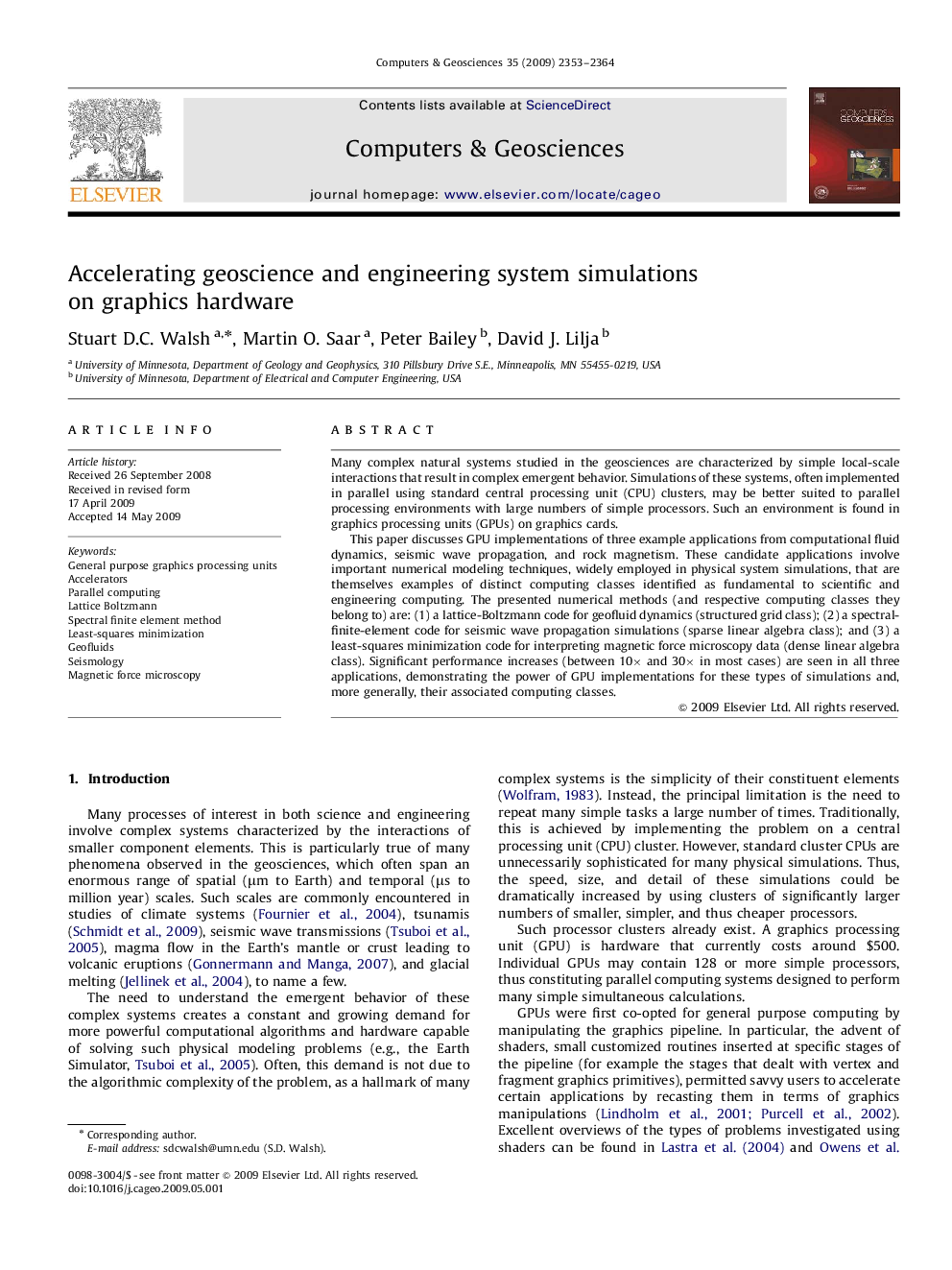| Article ID | Journal | Published Year | Pages | File Type |
|---|---|---|---|---|
| 507953 | Computers & Geosciences | 2009 | 12 Pages |
Many complex natural systems studied in the geosciences are characterized by simple local-scale interactions that result in complex emergent behavior. Simulations of these systems, often implemented in parallel using standard central processing unit (CPU) clusters, may be better suited to parallel processing environments with large numbers of simple processors. Such an environment is found in graphics processing units (GPUs) on graphics cards.This paper discusses GPU implementations of three example applications from computational fluid dynamics, seismic wave propagation, and rock magnetism. These candidate applications involve important numerical modeling techniques, widely employed in physical system simulations, that are themselves examples of distinct computing classes identified as fundamental to scientific and engineering computing. The presented numerical methods (and respective computing classes they belong to) are: (1) a lattice-Boltzmann code for geofluid dynamics (structured grid class); (2) a spectral-finite-element code for seismic wave propagation simulations (sparse linear algebra class); and (3) a least-squares minimization code for interpreting magnetic force microscopy data (dense linear algebra class). Significant performance increases (between 10×× and 30×× in most cases) are seen in all three applications, demonstrating the power of GPU implementations for these types of simulations and, more generally, their associated computing classes.
